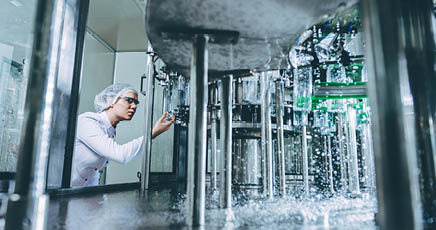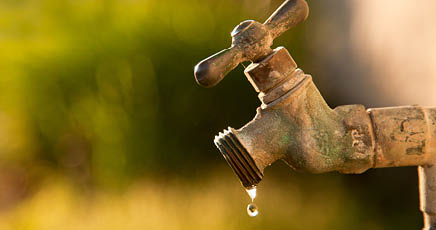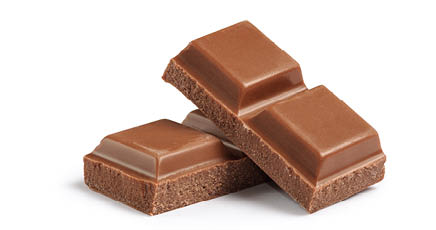LEARNING ACTIVITY
STORY
Since becoming more aware of water being a natural and finite resource, Amir and his friends decided to challenge themselves and their families. Everyone would run a water audit at home over a week and compare the results. Would the amount of water consumed reflect the number of people in each family? Would it make a difference that Amir’s Dad had plenty of plants that need watering? Would Rick having a swimming pool automatically mean their family consumes the most water?

Water is a precious resource, yet water is also wasted every day. This activity investigates water consumption and how you can reduce the amount of water wasted.
This learning activity is the third part of a sequence of 5 individual learning activities focused on catchment management. The order of these learning activities are: the story of a river, water sustainability, what’s in a drop?, the drain is just for rain and where the river meets the sea.
For children to:
- understand the urban water cycle
- learn different ways to reduce water usage
- discover how much water is consumed during your daily life
- appreciate that what happens on land can impact our rivers and ocean.
This activity can be undertaken at any time of year.
Introduction
This learning activity explores urban water consumption and waste water. Conduct a water audit at home or school to discover where water is wasted in your life and what you can do to save water.
Checklist
Instructions
STEP 1:
What’s in a drop?
Use the list of water sustainable strategies from the water sustainability activity and discuss which are most effective in your area and why.
Then discuss some of the water sustainable strategies you see at home and at school.
STEP 2:
How to conduct a water audit
Watch the Sydney Water video on how to conduct a water audit.
Prepare for your school water audit.
Divide the school into five zones and mark them on the school map. Divide the class into five groups. Assign each group a school zone, provide activity sheets and maps and allocate someone in the group who can write the notes.
STEP 3:
School water audit
In your assigned groups, use the activity data sheet and complete the school water audit. Ensure that you:
- Add group location, including building and room number
- Tally up all water devices
- Record any water saving features for each device (such as tap aerator, tap timer).
- Record the number of any broken devices
- Record any dripping devices.
Make sure you turn devices off during the audit. Notify staff to ensure all rooms are accessible and set a time limit of 20 minutes for the audit.
STEP 4:
Assessing the audit and ideas to be more sustainable with water use
Use the water usage table in the activity sheet to determine the number of litres of water that is wasted daily for each device.
Record daily litres of water used against each of the broken or leaking devices. Add these to calculate the total litres of water used in a day and determine the daily total of water wasted.
Discuss: Where are the locations that have wasted the most water? What ideas do you have to help reduce water wastage at your school or location? How can you encourage behaviour change amongst your peers?
Extension Activity
The Water Footprint network explains What is a Water Footprint? Use the personal water footprint calculator to calculate your personal water footprint.
Make a water management plan for your school.
Curriculum and Framework Links
SCIENCE
Year 7: ACSSU111, ACSSU112, ACSSU116, ACSHE120, ACSHE121, ACSIS124, ACSIS125, ACSIS130, ACSIS131, ACSIS132
Year 8: ACSHE135, ACSIS140, ACSIS145, ACSIS146, ACSIS234
Year 9: ACSSU175, ACSSU176, ACSIS164, ACSIS165, ACSIS170, ACSIS172, ACSIS174
Year 10: ACSSU189, ACSHE191, ACSHE194, ACSIS199, ACSIS204, ACSIS206, ACSIS208
BIOLOGY
Unit 1: Biodiversity and the interconnectedness of life
EARTH AND ENVIRONMENTAL SCIENCE
Unit 1: Introduction to Earth systems
Unit 3: Living on Earth – extracting, using and managing Earth resources
Unit 4: The changing Earth – the cause and impact of Earth hazards
HUMANITIES AND SOCIAL SCIENCES
Year 7: ACHASSI152, ACHASSI155, ACHASSI154, ACHASSI155, ACHASSI156, ACHASSI158, ACHASSI159, ACHASSI160, ACHASSI161, ACHASSI162, ACHASSK183, ACHASSK185, ACHASSK187
GEOGRAPHY
Year 7: ACHGK037, ACHGK038, ACHGK040, ACHGK042, ACHGS047, ACHGS048, ACHGS049, ACHGS050, ACHGS051, ACHGS052, ACHGS054
Year 8: ACHGK048, ACHGK050, ACHGK051, ACHGK053, ACHGS055, ACHGS056, ACHGS060, ACHGS062
Year 9: ACHGK065, ACHGS068, ACHGS070
Year 10: ACHGK070, ACHGK073, ACHGK074, ACHGK075, ACHGS079
Unit 1: Natural and ecological hazards
Unit 2: Sustainable places
Unit 3: Land cover transformations
HEALTH AND PHYSICAL EDUCATION
Year 7 & 8: ACPPS073
ETHICAL UNDERSTANDING
Exploring values, rights and responsibilities
PERSONAL AND SOCIAL CAPABILITY
Social awareness
CURRICULUM CONNECTIONS
Outdoor Learning
CROSS CURRICULUM PRIORITY
Sustainability
Reference List
ONLINE RESOURCES
Find out about the use of water in the Urban Water Cycle
Melbourne Water has tips on Using and Saving Water at School
The Water Footprint Network explains What is a Water Footprint?
Use the Water Footprint assessment to calculate your water footprint Water Footprints Assessment for Australia.
WATCH
This video from Sydney Water shows you how to conduct a Water Audit (6 minutes)
Watch this video from H20 Kids on How much water do you eat (18 minutes)
We value your feedback
When you have finished this learning activity, please tell us what you think with our survey.
Your feedback will help Landcare Australia improve the activities in the Junior Landcare Learning Centre.
Why not try one of our other Junior Landcare learning activities?
Love Letters to the Land
Biodiversity|First Nations Perspectives|Food Production|Waste Management
Creating a worm farm
Waste Management
Caring for our coasts: beach clean-up
Waste Management
Waterways: clean-up
Waste Management


